1. Plebani M, Borghesan F, Faggian D. Clinical efficiency of in vitro and in vivo tests for allergic diseases. Ann Allergy Asthma Immunol. 1995; 74:23–28. PMID:
7719878.
2. Shoji J, Kato H, Kitazawa M, Inada N, Sawa M. Evaluation of staphylococcal enterotoxin-specific IgE antibody in tears in allergic keratoconjunctival disorders. Jpn J Ophthalmol. 2003; 47:609–611. PMID:
14636854.

3. Ogino S, Bessho K, Harada T, Irifune M, Matsunaga T. Evaluation of allergen-specific IgE antibodies by MAST for the diagnosis of nasal allergy. Rhinology. 1993; 31:27–31. PMID:
8321979.
4. Nakagawa T, Miyamoto T, Akiyama K, Takasaka T, Kobayashi S, Nakazawa T, Ito K, Iikura Y, Baba M, Okuda M. Evaluation of allergen-specific IgE antibody and total IgE with a new IgE detection system named FAST: fluorescence allergosorbent test. Arerugi. 1992; 41:93–105. PMID:
1567287.
5. Sabbah A, Langlois P. The Pharmacia CAP system as a new measure of specific IgE. Application in the diagnosis of hypersensitivity to the venom of the Vespula wasp. Allerg Immunol (Paris). 1990; 22:173–178. PMID:
2198045.
6. Leimgruber A, Lantin JP, Frei PC. Comparison of two in vitro assays, RAST and CAP, when applied to the diagnosis of anaphylactic reactions to honeybee or yellow jacket venoms. Correlation with history and skin tests. Allergy. 1993; 48:415–420. PMID:
8238797.
7. Ollert M, Weissenbacher S, Rakoski J, Ring J. Allergen-specific IgE measured by a continuous random-access immunoanalyzer: interassay comparison and agreement with skin testing. Clin Chem. 2005; 51:1241–1249. PMID:
15905313.

8. Namai S, Ikemori R, Makino S. Comparison of Swedish and Japanese venom antigens in the diagnosis of Hymenoptera hypersensitivity in Japan. Asian Pac J Allergy Immunol. 1983; 1:143–148. PMID:
6681006.
9. Krishna MT, Ewan PW, Diwakar L, Durham SR, Frew AJ, Leech SC, Nasser SM. Diagnosis and management of hymenoptera venom allergy: British Society for Allergy and Clinical Immunology (BSACI) guidelines. Clin Exp Allergy. 2011; 41:1201–1220. PMID:
21848758.

10. Shimizu T, Hori T, Tokuyama K, Morikawa A, Kuroume T. Clinical and immunologic surveys of Hymenoptera hypersensitivity in Japanese forestry workers. Ann Allergy Asthma Immunol. 1995; 74:495–500. PMID:
7788517.
11. Lee YW, Sohn JH, Lee JH, Hong CS, Park JW. Allergen-specific IgE measurement with the IMMULITE 2000 system: intermethod comparison of detection performance for allergen-specific IgE antibodies from Korean allergic patients. Clin Chim Acta. 2009; 401:25–32. PMID:
19056369.

12. Grunwald T, Bockisch B, Spillner E, Ring J, Bredehorst R, Ollert MW. Molecular cloning and expression in insect cells of honeybee venom allergen acid phosphatase (Api m 3). J Allergy Clin Immunol. 2006; 117:848–854. PMID:
16630944.

13. Sampson HA, Muñoz-Furlong A, Campbell RL, Adkinson NF Jr, Bock SA, Branum A, Brown SG, Camargo CA Jr, Cydulka R, Galli SJ, Gidudu J, Gruchalla RS, Harlor AD Jr, Hepner DL, Lewis LM, Lieberman PL, Metcalfe DD, O'Connor R, Muraro A, Rudman A, Schmitt C, Scherrer D, Simons FE, Thomas S, Wood JP, Decker WW. Second symposium on the definition and management of anaphylaxis: summary report--Second National Institute of Allergy and Infectious Disease/Food Allergy and Anaphylaxis Network symposium. J Allergy Clin Immunol. 2006; 117:391–397. PMID:
16461139.

14. Mueller HL. Diagnosis and treatment of insect sensitivity. J Asthma Res. 1966; 3:331–333. PMID:
4380730.

15. Biló BM, Rueff F, Mosbech H, Bonifazi F, Oude-Elberink JN. Diagnosis of Hymenoptera venom allergy. Allergy. 2005; 60:1339–1349. PMID:
16197464.

16. Hamilton RG, Mudd K, White MA, Wood RA. Extension of food allergen specific IgE ranges from the ImmunoCAP to the IMMULITE systems. Ann Allergy Asthma Immunol. 2011; 107:139–144. PMID:
21802022.

17. Hemmer W, Focke M, Kolarich D, Wilson IB, Altmann F, Wöhrl S, Götz M, Jarisch R. Antibody binding to venom carbohydrates is a frequent cause for double positivity to honeybee and yellow jacket venom in patients with stinging-insect allergy. J Allergy Clin Immunol. 2001; 108:1045–1052. PMID:
11742287.

18. März L, Kühne C, Michl H. The glycoprotein nature of phospholipase A2, hyaluronidase and acid phosphatase from honey-bee venom. Toxicon. 1983; 21:893–896. PMID:
6658811.

19. Mari A, Iacovacci P, Afferni C, Barletta B, Tinghino R, Di Felice G, Pini C. Specific IgE to cross-reactive carbohydrate determinants strongly affect the in vitro diagnosis of allergic diseases. J Allergy Clin Immunol. 1999; 103:1005–1011. PMID:
10359878.

20. Mahler V, Gutgesell C, Valenta R, Fuchs T. Natural rubber latex and hymenoptera venoms share ImmunoglobinE-epitopes accounting for cross-reactive carbohydrate determinants. Clin Exp Allergy. 2006; 36:1446–1456. PMID:
17083355.

21. Golden DB. Epidemiology of allergy to insect venoms and stings. Allergy Proc. 1989; 10:103–107. PMID:
2661327.

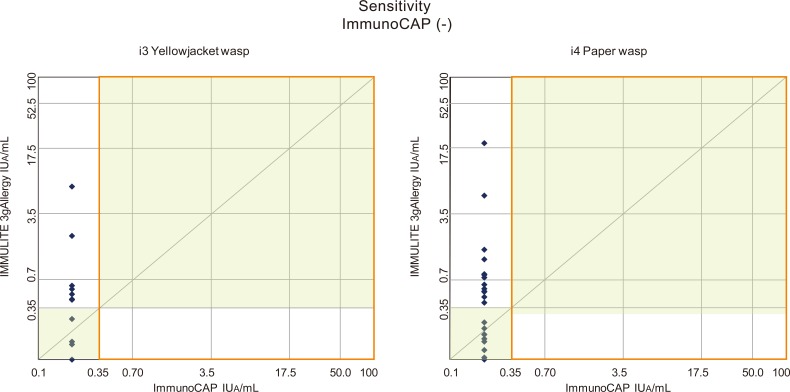




 PDF
PDF ePub
ePub Citation
Citation Print
Print


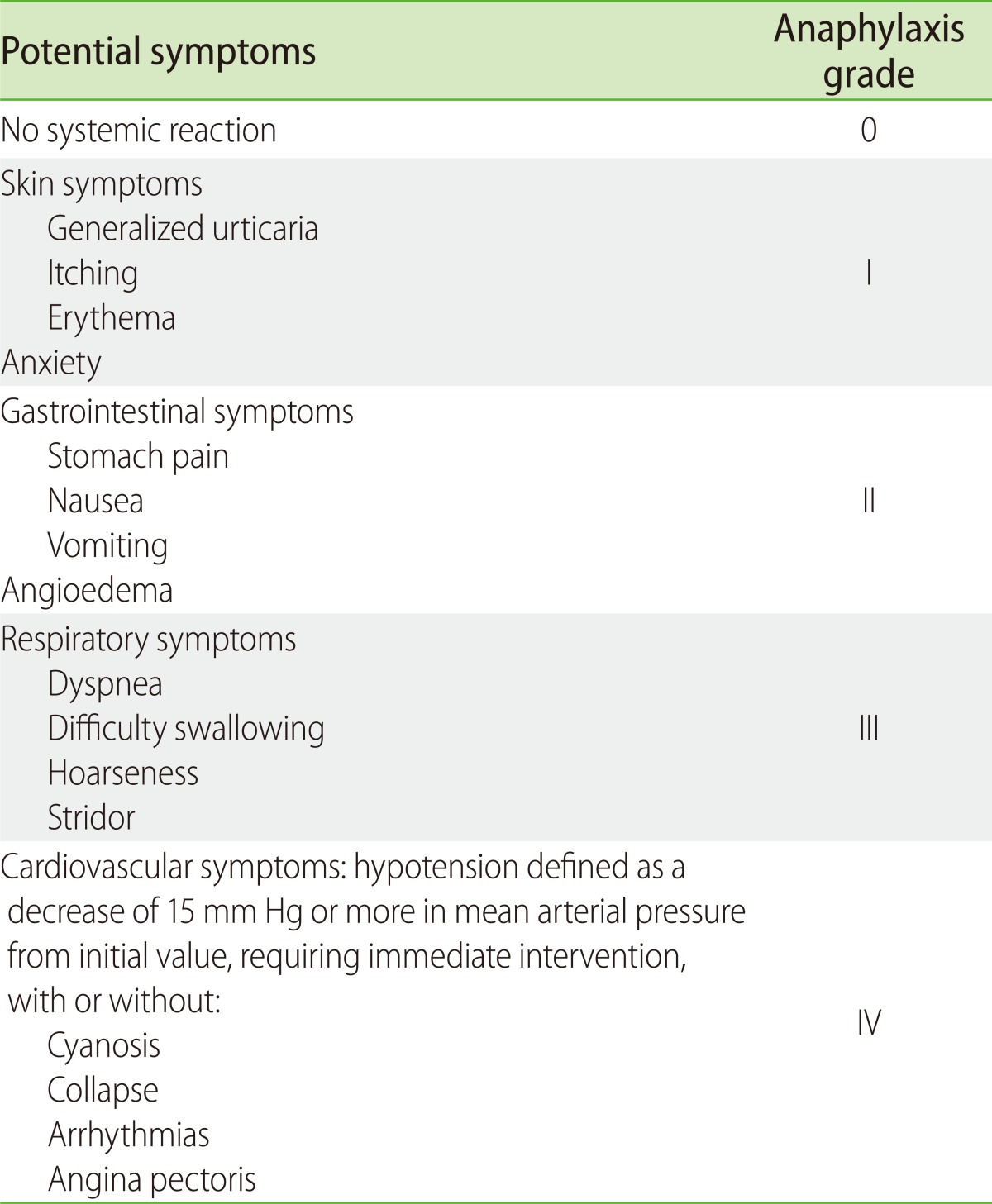
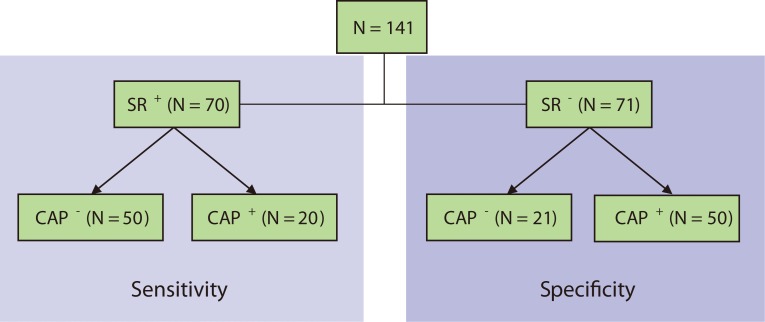

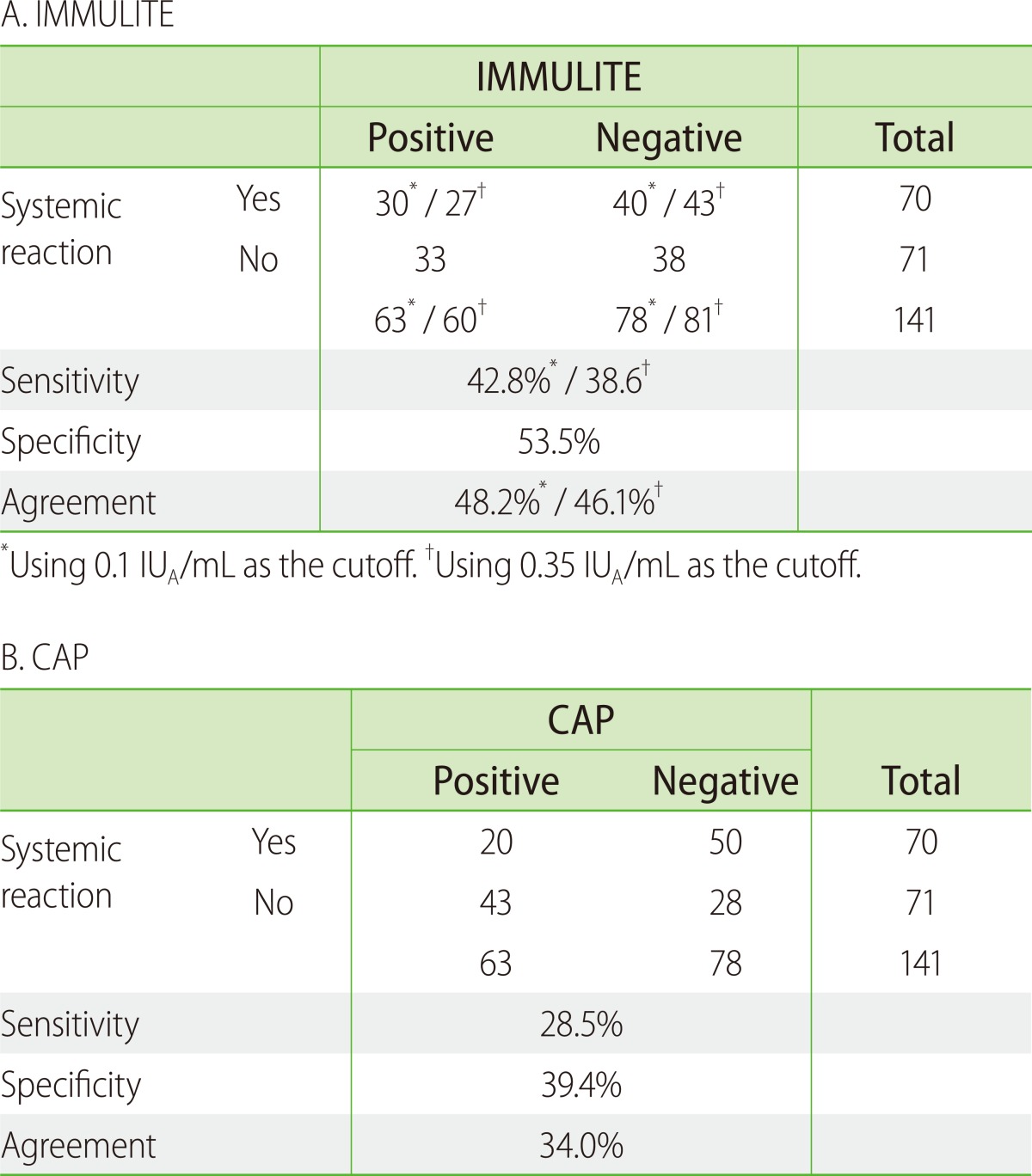
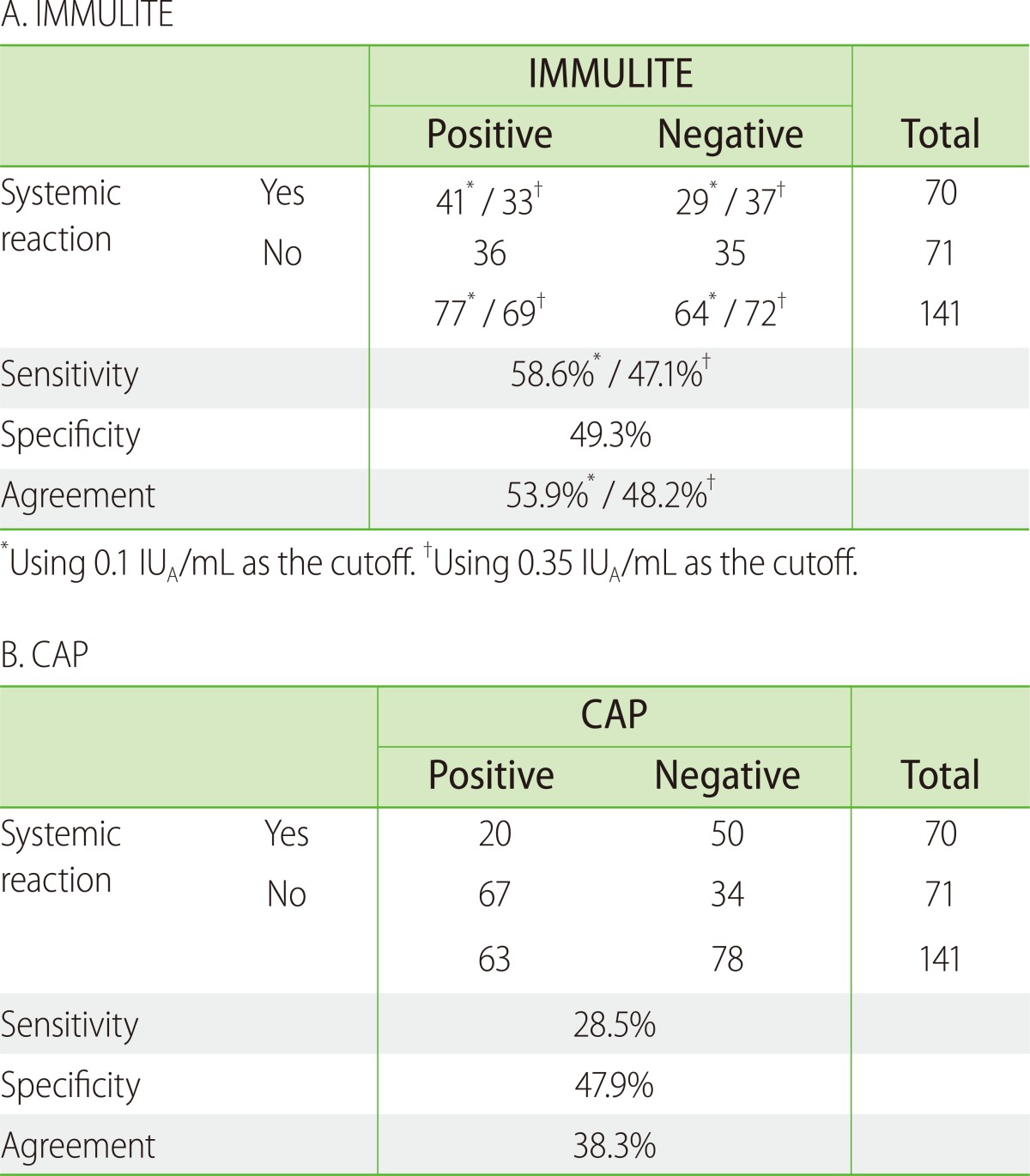
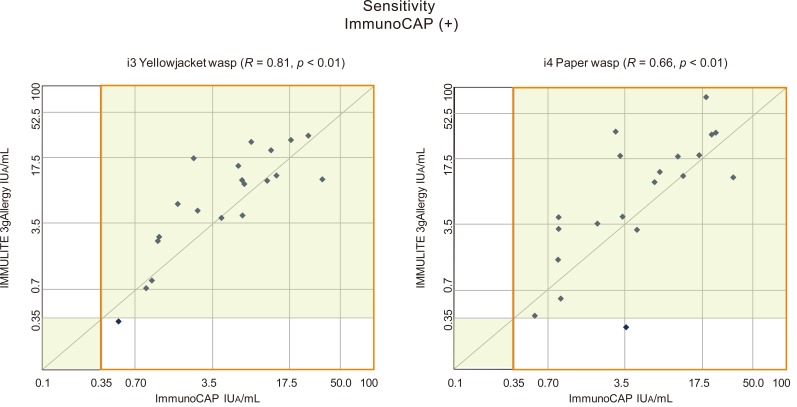
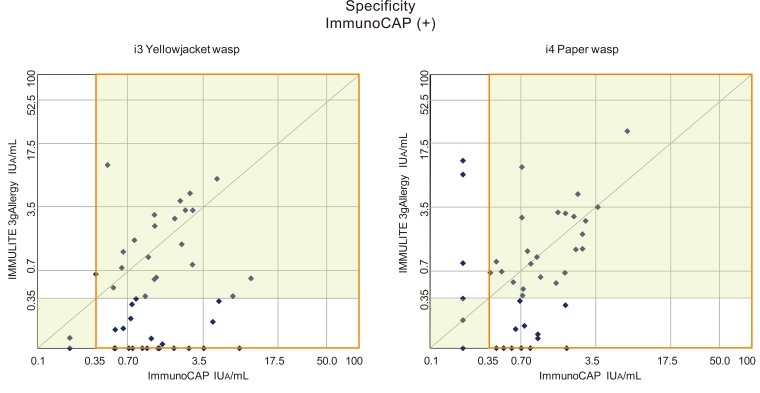
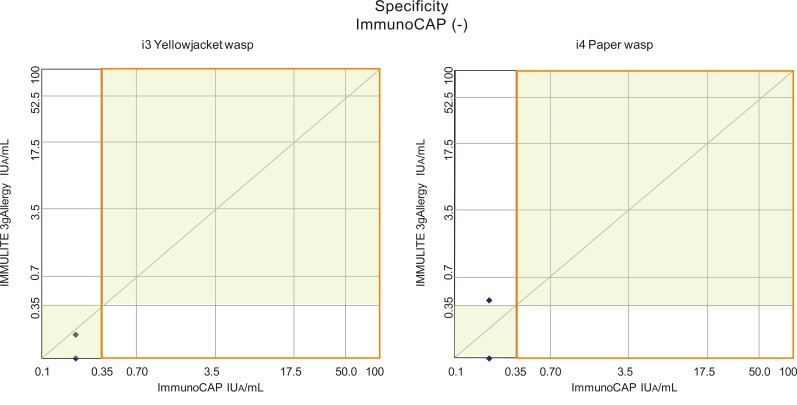
 XML Download
XML Download